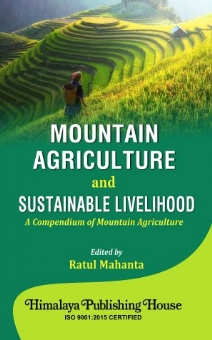The livelihoods of around 10 per cent of the world population are based on the mountain resources such as agricultural goods, water, forest and other ecosystem services. Interestingly, the ecosystem services that prevail in the mountains are governed by natural forces. It is not only that the hill people depend on the mountain ecosystems but those downstream also have to rely on these ecosystem services. But of late, the anthropogenic factors, particularly the developmental activities, and emerging processes like climate change and variability have made the mountain ecosystem more sensitive and increasingly susceptible to downgradation. This pause vulnerability to the livelihoods followed traditionally by the mountain dwellers. As the majority of the hill people overwhelmingly depend on agriculture and animal rearing for their livelihoods, the issue of their sustainability demands careful investigation and scientific discussion.
Contents –
1. Mountain Geography: Physical and Human Dimensions
– Martin F. Price, Alton C. Byers, Donald A. Friend, Thomas Kohler and Larry W. Price
2. Climate Change and Mountain Agriculture Susceptibility: Perception and Prediction
– M.C. Sati and Prashant Kumar
3. Towards Sustainable Livelihoods and Ecosystems in Mountain Regions
– Vishwambhar Prasad Sati
4. Mountain Farmers
– Thomas Spear
5. Agricultural Diversification and Food Security in the Mountain Ecosystem: A Case Study of Uttarakhand
– N. Mohammad and S.C. Rai
6. The Future ofMountain Agriculture
– Stefan Mann
7. Agroforestry Systems for Resources Conservation and Livelihood Security in Lower Himalayas
– Pankaj Panwar, A.K. Tiwari & K.S. Dadhwal
References






